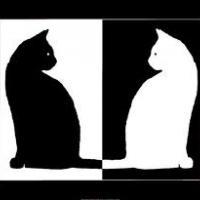
Opposite Colored Bishops
I cannot believe how quickly time passes! We are already up to opposite colored bishops endgames. Certainly, during my games, I am now more willing to go into endgames, how about you? There are disadvantages to too often going into endgames- the games can go on for 6 hours. In my last day of the Reno tournament I played a rook endgame in the morning round and the game lasted 7 hours. The evening game featured a bishop vs. knight endgame that ended in 6 hours. Thirteen hours of chess might be fun but I prefer less than 9 hours and with age I suspect it will not get better. I felt more confident when playing endgames, and scored 1.5/2 in the last two rounds in endgames, which is not a bad result. On the other hand, there should be a balance in everything, going into endgames when the position does not require it cannot be justified.
Opposite colored bishops are notorious for being drawing endgames even sometimes down a significant number of pawns. A typical defensive resource is to threaten to transfer into opposite colored bishops endgame from some other endgames. In the current position black is up a pawn but there is a disadvantage of having all the pawns on black squares – the squares of his bishop. This means that white can block his pawns with the king or the bishop on the light squares. White has weak pawns on a2, c4, g2 and g4. The bishop simultaneously can defend g4 and g2, while it will not be that easy with a2 and c4, since black can always chase the white bishop away from b3 by pushing the a-pawn. Black has the d4 passed pawn but it is blocked by the king. Black can either potentially create the passed f-pawn or the passed a- pawn. Two of our games featured these ideas, while the 'solution' had something else in mind.
This is the first game, it turned out to be a rather long game. I had black. Naturally, creating the passed f-pawn is the most logical solution to the position, so I tried to realize it in the game. White didn’t react the best way and ended up in a losing position. Creating the passed f-pawn is probably the most promising plan. So, the game…
Let us come to some general conclusions:
1. To create the passed f-pawn black must sacrifice the h-pawn and be very careful in controlling the white h-pawn.
2. White has to keep the king close to the f-pawn so as to stop it when it is advancing.
3. Black has a deflective maneuver of pushing f3 and not taking back on f3 but instead pushing the g-pawn forward.
We agreed that it is extremely hard to win this position and trying to create the f-pawn as a passed pawn is a great idea but we wanted to explore the idea of creating the a-passed pawn. Even though the game ended in a draw there were quite a few interesting moments to examine.
Let us summarize the ideas from the game:
1. White has two ways of defending the a-pawn when the black king gets to a3. It seems that from f3 it is a safer way. When black is pushing the a-pawn to a4, chasing the bishop away, white retreats to d1, while attacking the pawn.
2. Black sacrifices the d-pawn in order to take the a-pawn and to create his own passed a-pawn.
3. The white king must stay around the b and a files.
It seemed to us that white had a harder time defending against the f-pawn than the a-pawn. The justification can be that in the case of the f-pawn there are two pawns that are moving forward: g and f. While, with the a-pawn there is only one passed pawn. Opposite colored bishops are generally hard to win. Your goal is to put a maximum amount of problems before your opponent and then if the position is drawn there is nothing you can do about it. Let us look at the actual game. I am not too impressed with the analysis of the game, it seems that the analysis tries to show that the position is winning for black. To us it seems more on the drawish side: if white puts up a tough defense the game should end in a draw.
Another position with opposite colored bishops for the next week and then we will change the format a little and have you solve a set of positions to review all the material covered.






